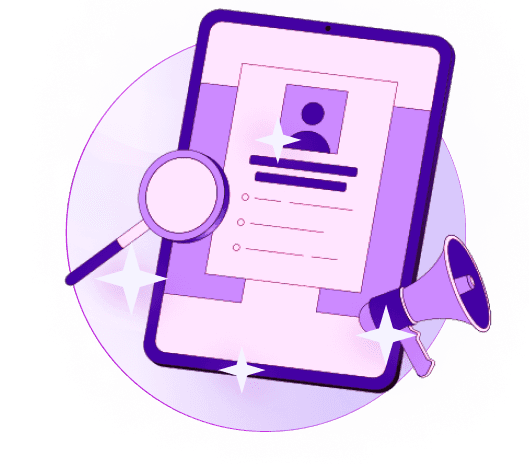Blogs
Articles

What Is Workflow Automation? Benefits and How to Get Started
Employees spend a third of their workday on tedious manual data entry and other low-priority tasks - the prime targets of workflow automation.
This detailed guide will help you understand what workflow automation means and its key benefits like increased efficiency and cost savings. You'll find a step-by-step approach to bring automation into your business.
We'll show you exactly how to start your automation journey, whether you want to optimize daily processes or improve your overall operations.
What Is Workflow Automation?
Workflow automation uses technology to make tasks, documents, and information flow smoothly across work activities based on business rules. The system turns manual, repetitive processes into automated sequences that need minimal human input.
Software that runs some or all of a process replaces traditional manual workflows. Today's systems come with accessible drag-and-drop interfaces that let non-technical users create automations. The system creates automated actions that start when specific events happen. These actions move tasks and information between people and systems based on set rules.
Workflow automation vs. robotic process automation (RPA)
People often mix them up, but workflow automation and RPA serve different purposes:
Workflow automation arranges entire processes and helps teams and departments work better together. The system manages workflows that connect multiple people, systems, and departments. This makes it perfect for processes like employee onboarding or procurement approvals.
Robotic process automation tackles specific repetitive tasks that follow clear rules and work with multiple systems. RPA bots handle individual tasks like pulling data from emails or entering information into systems, rather than managing entire workflows.
Workflow automation needs more investment in hardware, software, and people. RPA offers more flexibility and economical solutions because teams can deploy it quickly with little training.
Key Benefits of Workflow Automation
Workflow automation brings several key advantages:
Increased efficiency - Automated workflows finish tasks faster and run non-stop, which reduces workflow cycles by a lot.
Error reduction - Standard processes cut down human mistakes. Tasks maintain consistent quality no matter who starts them.
Cost savings - A 2024 Deloitte survey found 81% of CFOs say automation saves money most effectively.
Better compliance - The system enforces standard processes and regulatory rules, which lowers compliance risks.
More transparency - Up-to-the-minute data analysis shows process status and helps remove bottlenecks.
Happier employees - Teams can focus on achieving more strategic work when the system handles boring tasks. This leads to better job satisfaction and retention.
Companies that use workflow automation see major improvements in quality control, customer satisfaction, and employee experience.
How Workflow Automation Works?
Modern workflow automation runs on a sophisticated system where components work together to optimize business processes. Unlike manual workflows, automated systems complete tasks with precision and consistency.
Trigger-based task execution
A trigger starts the workflow automation process. These triggers could be form submissions, data updates, time-based schedules, or file uploads. The system takes over and executes predefined actions automatically once activated. A customer submits a form and the system creates a database record and starts the next steps in your process.
Role-based task assignment
Tasks automatically go to individuals or teams based on predefined roles after a workflow trigger. The right people handle specific responsibilities without manual routing. Role-based assignments boost security and help comply with organizational policies. Many systems can pick approvers based on organizational hierarchies. Your workflows line up with company structures even as staff changes happen.
Integration with existing tools and systems
Good workflow automation merges with your current software ecosystem. Modern platforms integrate with systems, applications, and databases to fetch or update data. Automation tools connect to your systems through APIs or other integration methods. Data stays secure through proper authentication. Data flows naturally across platforms. Information moves quickly throughout your organization without getting stuck in silos.
Real-time monitoring and analytics
You can track automated workflows through live monitoring. Teams track progress, see task status, and spot bottlenecks as they happen. These insights help make processes better by showing where improvements are needed. Many platforms give you customizable dashboards. You can see important metrics and keep teams informed about workflow performance.
Examples of automated workflows in action
Here are some practical ways workflow automation helps:
Incident management: Systems create tickets, notify teams, and aid collaboration to fix problems
Lead enrichment: Platforms gather contextual data about new leads so sales teams can prioritize opportunities
Payment processing: Systems verify invoices against purchase orders and schedule payments
How to Get Started with Workflow Automation?
Starting your workflow automation experience needs a step-by-step approach. Here's a breakdown of steps that will help you set up effective automation in your organization.
1. Identify repetitive and manual processes
Your original focus should be on processes that keep repeating, cause errors, or take too much time. Tasks with clear rules that don't need much human judgment work best. Some good examples include data entry, invoice processing, customer support request management, and expense reporting. Your team members might point to areas they call "broken" or "complicated" - these are perfect spots to look at.
2. Map out your current workflow
A clear picture of your existing processes should come before any automation. This step will help you measure improvements and catch all the important details. Write down what each process does, who handles it, what triggers it, and what should happen at the end. Swimlane diagrams work great to show different roles and departments, with decision points clearly marked.
3. Choose the right workflow automation software
Pick automation tools that match what you need. The software should be easy to use, work well with your current systems, keep things secure, and offer good support. Look for easy-to-use interfaces, AI features that handle documents smartly, workflows you can customize, and up-to-the-minute data analysis. The solution should grow with your business and adapt to market changes.
4. Build and test your automated workflow
Your workflow design needs clear rules, conditions, and decision points. The platform's visual tools and ready-made templates will help create your automated processes. Testing with real-life scenarios will spot potential issues before you launch. Each workflow should work correctly in different situations.
5. Train your team and deploy
Your team needs proper preparation for the change. Show them how things work and give them detailed training materials. Edstellar points out that good training helps employees design, use, and manage automated workflows better. The rollout should start with a couple of quick wins to build trust before moving to complex processes.
6. Monitor performance and optimize
Set up ongoing monitoring to track how your workflows perform and measure their effect on business. Key metrics like response times, error rates, and completion rates will show where you can make things better. Regular checks against your original goals will ensure you're getting the benefits you expected. This full picture helps find bottlenecks and ways to boost performance.
Persana offers an easy-to-use solution that's available to teams of all sizes. You can start your workflow automation without getting stuck in complexity.
Conclusion
Workflow automation is revolutionizing how businesses handle their manual processes. This piece shows how innovative technology removes tedious tasks and gives substantial time savings with operational benefits. Teams can now spend their recovered hours on strategic initiatives that add real business value.
The difference between complete workflow automation and task-specific RPA plays a key role in planning your automation strategy. Each approach has its own advantages based on your business needs and complexity requirements. Companies that implement these solutions well see better efficiency, lower costs, and improved employee satisfaction.
Making workflow automation work needs a step-by-step approach. You should identify your most time-consuming processes first. Then map your current workflows before picking the right software. Testing the system properly before full rollout will give you smooth transitions. Good training helps your team accept rather than resist the change. Regular monitoring after setup helps find ways to make things even better.
FAQ
Which tool is used for workflow automation?
Companies of all sizes use different automation tools based on what they need. Jira Software stands out because it offers customizable templates and knows how to automate task assignments, issue tracking, and notifications. Popular platforms like Zapier excel at quick cloud integrations that work with 5,000+ apps.
Make.com (formerly Integromat) handles complex multi-step workflows, while n8n provides self-hosted solutions that put data privacy first. On top of that, platforms like SharePoint, ServiceNow, and Microsoft Power Automate come with their own specialized workflow features.
What are the three automated workflows?
These three automated workflows are the most common in businesses today:
Customer Onboarding Workflow - The whole process from registration and data verification to first communications runs automatically. This creates a smoother experience for new clients.
Invoice Processing Workflow - The system captures invoice data, confirms it, and routes it through approval processes before payment. This reduces errors and improves financial compliance.
Employee Onboarding Workflow - New hire integration becomes optimized through automatic document issuance, workstation setup, and training session scheduling.
What is data workflow automation?
Data workflow automation uses technology to optimize data flow between an organization's processes and systems. The system moves, transforms, and processes data automatically with minimal human input, which streamlines operations and cuts down errors. Companies can design data workflows using process mapping tools and automation platforms that handle extraction, transformation, loading (ETL), or trigger actions based on preset conditions.

Create Your Free Persana Account Today
Join 5000+ GTM leaders who are using Persana for their outbound needs.
How Persana increases your sales results
One of the most effective ways to ensure sales cycle consistency is by using AI-driven automation. A solution like Persana, and its AI SDR - Nia, helps you streamline significant parts of your sales process, including prospecting, outreach personalization, and follow-up.



